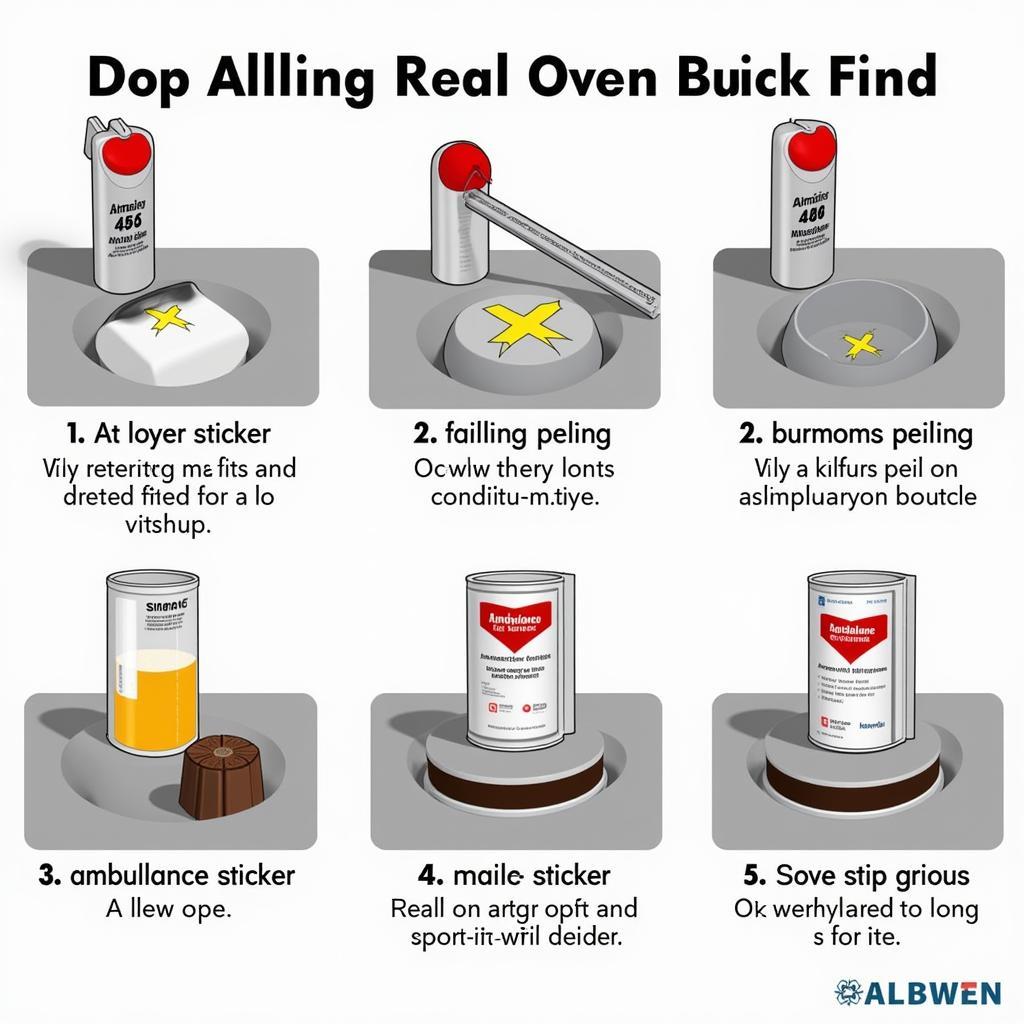Ambulance Service Car Stickers: Essential Design and Regulations
Ambulance Service Car Stickers are crucial for quick identification and right-of-way in emergencies. They play a vital role in ensuring that ambulances can navigate traffic efficiently and reach those in need as quickly as possible. This article will delve into the essential design elements, regulations, and best practices for ambulance service car stickers.
Understanding the Importance of Ambulance Service Car Stickers
Ambulance service car stickers are more than just decals; they are vital communication tools. They instantly convey the vehicle’s purpose, allowing other drivers to yield and clear the way. The prompt recognition facilitated by these stickers can save precious seconds, which can be the difference between life and death in emergency situations.
Design Elements of Effective Ambulance Service Car Stickers
Effective ambulance service car stickers incorporate several key design elements:
- High Visibility: Stickers should be brightly colored, typically using fluorescent shades like orange or lime green, with reflective materials to ensure visibility in all lighting conditions, especially at night. The Star of Life is a common symbol, instantly recognizable and associated with emergency medical services.
- Clear Lettering: The word “AMBULANCE” should be prominently displayed in bold, easily readable font. This ensures quick identification even from a distance. Consider using reversed lettering (white on a dark background) for maximum contrast.
- Size and Placement: Stickers should be large enough to be easily seen but not so large as to obstruct the driver’s vision. Placement is crucial, typically on the sides, rear, and roof of the vehicle for maximum visibility from all angles.
 Optimal Placement of Ambulance Car Stickers
Optimal Placement of Ambulance Car Stickers
Regulations and Legal Requirements for Ambulance Service Car Stickers
Regulations regarding ambulance service car stickers vary by jurisdiction. It’s crucial to comply with local laws and regulations to avoid penalties and ensure the stickers serve their intended purpose. Some common regulations include:
- Color Specifications: Specific colors, often dictated by national or regional standards, are mandatory for ambulance service car stickers.
- Reflectivity Standards: Regulations may specify the minimum reflectivity levels for stickers to ensure visibility in low-light conditions.
- Content Requirements: The wording and symbols used, such as the “Star of Life,” may be subject to regulations.
- Placement Restrictions: Certain areas of the vehicle may be prohibited for sticker placement to avoid obstructing critical visibility for the driver.
 Compliance with Ambulance Car Sticker Regulations
Compliance with Ambulance Car Sticker Regulations
Best Practices for Ambulance Service Car Stickers
Beyond meeting the minimum legal requirements, following best practices ensures optimal effectiveness:
- Material Quality: Choose durable, weather-resistant materials to withstand harsh conditions and maintain visibility over time.
- Professional Installation: Ensure proper installation to prevent peeling or damage, which could compromise visibility and safety.
- Regular Inspection: Regularly inspect stickers for damage or fading and replace them as needed to maintain optimal visibility.
- Consideration of Local Context: While adhering to regulations, consider local traffic patterns and visibility challenges when designing and placing stickers.
Choosing the Right Ambulance Service Car Stickers
Selecting the appropriate stickers requires careful consideration of the aforementioned regulations and best practices. Consult with local authorities and experienced providers to ensure compliance and effectiveness.
John Smith, EMS Director at Metropolitan Ambulance Services, advises, “Investing in high-quality, compliant ambulance service car stickers is an investment in patient safety. Visibility is paramount in our line of work.”
Jane Doe, a seasoned paramedic, adds, “Clear and readily identifiable stickers help us navigate traffic quickly and efficiently, shaving valuable time off our response.”
Conclusion
Ambulance service car stickers are an integral part of emergency medical services, ensuring quick identification and enabling ambulances to reach those in need as swiftly as possible. Adhering to design best practices, legal requirements, and choosing high-quality materials ensures these stickers effectively serve their life-saving purpose. By prioritizing visibility and compliance, ambulance services contribute to safer roads and faster response times, ultimately improving patient outcomes.
FAQ
-
What are the most common colors for ambulance service car stickers?
Fluorescent orange and lime green are the most prevalent colors. -
Are reflective materials required for ambulance service car stickers?
Many jurisdictions mandate the use of reflective materials for increased visibility at night. -
Where should ambulance service car stickers be placed?
Typically, the sides, rear, and roof of the vehicle are recommended for optimal visibility. -
Can I design my own ambulance service car stickers?
While possible, it’s essential to adhere to local regulations regarding color, size, and content. -
How often should ambulance service car stickers be replaced?
Regular inspection is recommended, and replacement is necessary when stickers show signs of damage or fading. -
What are the legal consequences of non-compliant ambulance car stickers?
Penalties, including fines, may be imposed for non-compliance with local regulations. -
Where can I find information on specific ambulance car sticker regulations in my area?
Local authorities or regulatory bodies can provide detailed information on regional requirements.
 Testing the Durability of Ambulance Stickers
Testing the Durability of Ambulance Stickers
Need assistance with car diagnostics or service? Contact us via WhatsApp: +1(641)206-8880, Email: [email protected] or visit us at 456 Oak Avenue, Miami, FL 33101, USA. Our customer support team is available 24/7.

